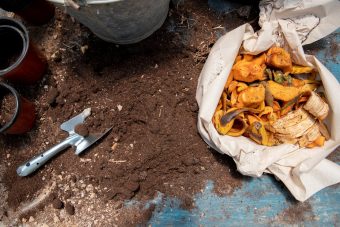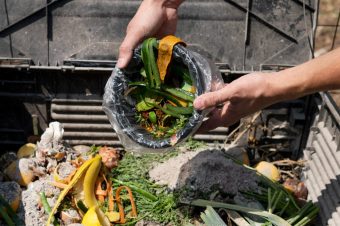
Disseminating environmental awareness has made popular numerous activities and habits that we as a society once might have been ashamed of or thought should not occupy a place in our lives. Although concepts such as recycling have not appeared only recently but have been present for many years, they have entered the wider society relatively recently. During my childhood, it was largely thought that collecting packaging waste was done exclusively by people whose job was to collect it. When I say job, I mean a job where you have a contract and a salary. At that time, in my generation, as well as among adults, it was expected that we disposed of waste in a nearby bin/container, and even if garbage was left in nature, there was always someone who would deal with it. With the emergence of a broader awareness of the need to preserve nature, we developed the understanding that we should not leave waste collection solely to those paid to do it but that it should also be our job. Perhaps young people were ashamed to publicly pick up a bottle, bag or cigarette butt when they were not disposed of properly, but today this practice is becoming increasingly commendable.
I remember when I was a child, adults would take empty glass bottles to stores to return and get new ones, probably unaware that this move was necessary for nature because they had to return old bottles to get new ones. This also facilitated the work of the producers and reduced production costs. Both of these practices were good for the environment.
The same principle can be applied to the concept of composting. Perhaps even more than the concept of recycling, composting seems to be one of those newly minted terms. It was thought that composting was done only by older people who live in the countryside, have poultry and grow fruits and vegetables, or that it is again the job who get paid to do it, i.e. agricultural workers. Some people did it without realizing that, in this way, they were positively contributing to the well-being of nature. My grandmother is one of them. She asked us not to throw away the shells whenever we ate eggs. She would process them and then use them as poultry feed. She was convinced that by doing so, she was saving money on feed and improving the quality of the eggs and meat, but she was unaware that she was doing much more.
How can Composting Help Preserve the Environment?
In its simplest explanation, composting is the biological process of breaking down organic matter. An increasing number of people, especially in more developed countries, have included composting in their everyday life at home. If we adopt this way of life, we will contribute to the well-being of our environment in many ways. The composting material mainly comes from our kitchens, which, if not composted, becomes waste. It is a well-known fact that waste in landfills is a multifaceted problem. One of the problems is that burning landfill waste releases emissions that pollute the air. It may seem to us that food waste cannot be so harmful because it originates from nature, and it is only natural for it to end up in nature. However, when it finds itself in a landfill, under mentioned conditions, often buried with other rubbish and devoid of an oxygen supply, it begins to produce a greenhouse gas that is much more harmful than carbon dioxide, which is methane. However, if we manage this kind of waste in a proper way, such as composting, it would not only reduce landfill waste and air pollution but also generate other benefits.
Compost is rich in nutrients which can improve soil quality. It also helps retain moisture, enhancing plant growth. With these properties and for this purpose, people who grow vegetables, fruits and cereals reduce the need for artificial and chemical fertilizers, which are very harmful. Finally, we should mention that composting supports biodiversity because it boosts the diversity of microorganisms and insects in the soil, which is good for the ecosystem.
What can be Composted, and How can We Make Compost?

The first thing that should be noted is that the remains of meat, dairy products, and plants treated with pesticides and fatty foods should not be added to the composter. Furthermore, the term composter means a place where material for composting is deposited. It can be a certain part of the yard that we will fence off, a 30-50 liter container or a special technology in the form of a bucket into which organic matter is inserted and turned into compost. These bins are small, so they are also suitable for the kitchen.
Although different recipes determine the foods and the ratio of how much should be represented in the compost, there are a few basic rules. In terms of food we can compost, we need the so-called brown material (as it contains carbon) which are dry leaves, straw, cardboard and small pieces of wood – wood shavings. Green material (which contains nitrogen) includes the remains of fruits and vegetables, banana peels, egg shells, freshly cut grass, coffee grounds, tea bag filters and more.
Before starting this process, you should know that composting takes up to several months. There are ways to speed it up, such as chopping food as finely as possible. At the very beginning, when finding a suitable container, bear in mind that moisture and oxygen circulation are essential for composting, which is why it is necessary to drill holes in the container. A drainage layer should be placed at the bottom of the container, made of broken dry twigs and a row of cardboard torn into larger pieces and placed over it; after that comes the brown material. Before the green layer, it would be good to put the so-called humus layer, and the best option would be to use forest soil. The penultimate layer is green, followed by another brown one. This completes the first part of the process. Then, leave the compost to rest for ten days. After that period, we start stirring the compost every few days to maintain moisture and oxygen. That’s it! The process is repeated by adding new layers of brown and green materials while stirring and retaining moisture.
However, for your composting process to be successful, there are numerous tips on monitoring whether it is going in the right direction, how to maintain moisture properly, what composting material ratio you should use in a composting container and which container is the most suitable.
Composting was even given its day that is marked worldwide – Learn about Composting Day – on May 29. My task for today is complete. In the spirit of Learn about Composting Day, I wanted to highlight the importance of composting and inspire people to take some of their time to do further research on this topic and maybe decide to compost themselves. Apart from being interesting, especially for children, it will also contribute to preserving nature.

